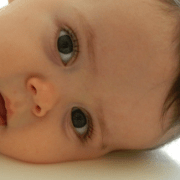Progress in our Understanding of Aging Brains (Premium)
FELIX J ROGERS, DO
Most of the early studies on aging relied on natural history observations of defined populations that were followed for decades:
* In Sweden, more than 2000 identical and non-identical twins were followed to compare those who lived in separate homes from those who remained together to define the roles of genetics and environment.
* The nun study (USA) used an archive of essays written when the women applied to the convent at age 22 as a marker of cognitive ability.
* More than 900 centenarians in Okinawa, Japan comprise a long running study that examines genetic and lifestyle factors in the unusual longevity and lucidity in this cohort.
A decades old study from Scotland is now using IQ tests to assess how the brain ages. By coincidence, the report in Science Magazine highlights the story of one of those people, Sheila McGowan, who was 11 years old on June 4, 1947. On this date, in her hometown of Glasgow, this Sheila McGowan joined more than 70,000 other school children throughout Scotland as part of one of the first efforts to measure the intelligence of an age cohort across an entire nation. Sadly, the original goal of the surveys was to determine how many students were mentally defective and unlikely to benefit from schooling.








